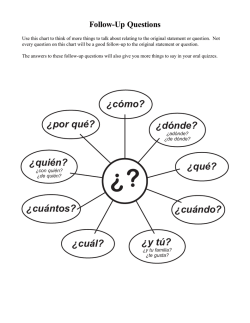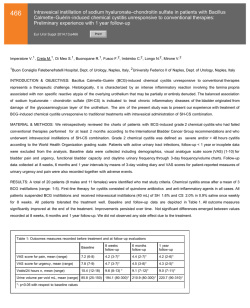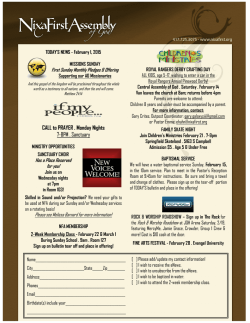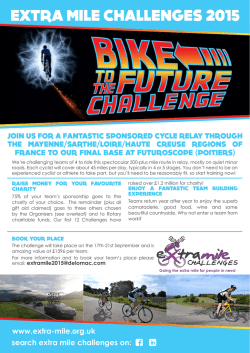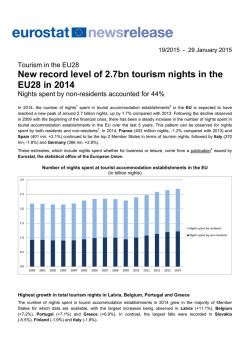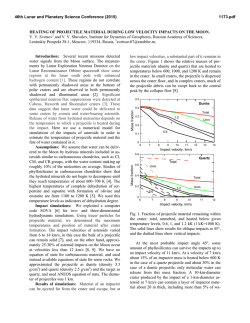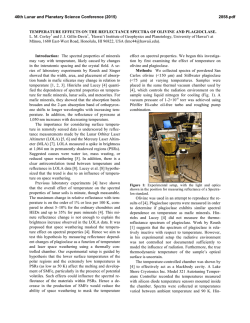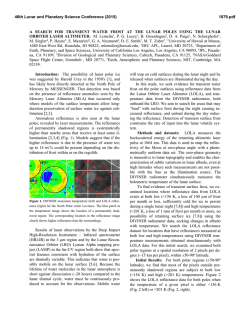
PRELIMINARY RESULTS OF ADLER PLANETARIUM NEO
46th Lunar and Planetary Science Conference (2015) 2726.pdf PRELIMINARY RESULTS OF ADLER PLANETARIUM NEO CHARACTERIZATION AND ASTROMETRIC FOLLOW-UP. M. J. Brucker1, M. Hammergren1, K. A. Nault1, G. Gyuk1, and M. R. Solontoi2, 1 Adler Planetarium, 1300 S. Lake Shore Dr., Chicago, IL 60605, [email protected], 2Lynchburg College (Physics Department, 1501 Lakeside Dr., Lynchburg, VA 24501). Introduction: We will present results from fourth quarter 2014 and first quarter 2015 observations as part of the Adler Planetarium’s Near-Earth Object (NEO) characterization and astrometric follow-up program using the Astrophysical Research Consortium (ARC) 3.5-meter telescope at Apache Point Observatory (APO). For the motivation, instrumentation, and overview of our program, please see the presentation by M. Hammergren. Completed Observations: For the fourth quarter of 2014, we had 29 2-hour nights scheduled (10 of which were lost due to weather) primarily for astrometric follow-up and 4 half-nights scheduled for characterization. We observed a total of 167 Near-Earth asteroids. 154 asteroids were targeted for astrometric follow-up with the Seaver Prototype Imaging camera (SPIcam), 4 asteroids were targeted for astrometric follow-up as a test for Agile, 16 asteroids (including 1 non-detection) were targeted for reflectance spectroscopy with the Dual Imaging Spectrograph (DIS), and 7 asteroids were targeted for rotational light curve observations with Agile. The astrometric follow-up targets were selected based on absolute magnitude to prioritize H > 25 for small objects, relative velocity to prioritize v > 2km/s for fast moving objects, and 3σ uncertainty less than 120” to ensure that the target is in the FOV. Candidates were drawn from the Minor Planet Center NEA Observation Planning Aid, the JPL SB What’s Observable tool, the Spaceguard priority list, and the Spaceguard faint NEOs list. The reflectance spectroscopy targets were selected from the NASA close approach table with an eye to the Arecibo planetary radar target list, the Goldstone solar system radar target list, the Near-Earth Object Human Space Flight Accessible Targets Study (NHATS) table, and the Spaceguard priority list. See Table 1 and Figure 1. This Quarter’s Observations: For the first quarter of 2015, we have 35 2-hour nights scheduled and 10 half-nights scheduled. We will report on the results of January and February’s observations (24 2-hour nights and 5 half-nights). Assuming a loss rate of 35% due to weather, the average at APO, we can expect to observe about 15 of the 24 2-hour nights. If we devote all of the 2-hour nights to astrometry, this would allow for follow-up on more than 250 NEOs. During eight of our ten scheduled half-nights, we will focus on six NEOs making close approaches to Earth (90416, 141527, 357439, 2002 RQ25, 2007 EC, 2014 EK24). The other two nights are reserved for targets of opportunity. All six NEOs are planned targets for Goldstone solar system radar observations, four are planned targets for Arecibo planetary radar observations, and three are NHATS targets. See Table 2 and Figure 1. Table 1: 2014 Q4 Reflectance Spectroscopy Targets1 1 Absolute magnitude values are from the JPL SmallBody Database Browser and Delta values are from the JPL HORIZONS system. *Observed with Agile for rotational light curve. Figure 1: Absolute Magnitude vs. Distance from Earth at Time of Observation 46th Lunar and Planetary Science Conference (2015) Table 2: 2015 Q1 Reflectance Spectroscopy Targets1 1 Absolute magnitude values are from the JPL SmallBody Database Browser and Delta values are from the JPL HORIZONS system. Additional Information: This work is based on observations obtained with the Apache Point Observatory 3.5-meter telescope, which is owned and operated by the Astrophysical Research Consortium. We gratefully acknowledge support from NASA NEOO award NNX14AL17G, and thank the University of Chicago Department of Astronomy and Astrophysics for observing time in 2014. 2726.pdf
© Copyright 2025
